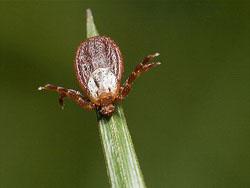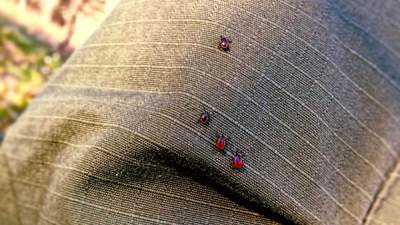
Researchers have shown that the tick bite, which, as we know, can cause Lyme disease, actually can transmit a much greater number of pathogens.
In recent years, scientists have found that ticks can transmit to people not only one disease – for example, Lyme disease – in one bite. However, so far research has not been directed to complete the identification of these opportunistic infections present in the saliva of ticks. Professor Muriel Tussaud research Director of the National veterinary school of Alfort (France) at INRA and leading expert in the study of ticks, decided with his team to identify all pathogens for humans, which may give us the dog tick (Ixodes ricinus) from the family shadowy mites – the most common type in Europe and basic, which causes serious illness.
So, here’s the most serious warning before seasons cottages, Hiking and picnics! Today – 38 bacteria, parasites and viruses transmitted through the saliva of the tick when it bites into its prey in the desire enough to suck blood. The results of the INRA research published today, Thursday, in the medical journal Plos Neglected & Tropical diseases (PLoS neglected and tropical diseases); as experts said, the discovery of such magnitude opens new areas of research because it shows that what was once considered exclusively co-infection (concomitant infection), is the rule rather than the exception.
Indeed, the results are striking: half of the ticks analyzed INRA, infected by at least one pathogen. And among them, about 50% infected for up to five pathogens! Therefore, it is clear that tick-borne coinfections, finally, admittedly a common phenomenon, and that “currently, the tests used to identify Borrelia bacteria responsible for Lyme disease, is not a good strategy because such a diversity of pathogens that can be transmitted in one tick bite. In addition, it is quite possible that these co-infections, “fully repudiate the results of the blood test,” explains the head of research.
Scientists realized that the clinical signs of consequences of tick bites is very different depending on whether the patient is infected with one pathogen or more. “This makes diagnosis and treatment of disease. Still doctors don’t understand why some patients respond well to treatment with antibiotics against Lyme disease and others do not. Our theory suggests that co-infection have a role as treatment. Now it is important to understand to what extent “, says Professor Muriel Tussauds.
During his research, INRA scientists did not stop at identification of pathogenic microorganisms. They also analyzed the role of four bacteria living in symbiosis with the bacterium Borrelia, and is still considered pathogens for man. “One of them even present in 100% of all ticks! It is a close relative of Wolbachia, which reduces the infectivity of dengue virus in the mosquito. We are absolutely in a different way to look at these symbionts, which may play a key role in the maintenance and transmission of pathogens. Effects on the symbiosis can be a new way to combat diseases transmitted by ticks, “says Professor Muriel Tussauds.








